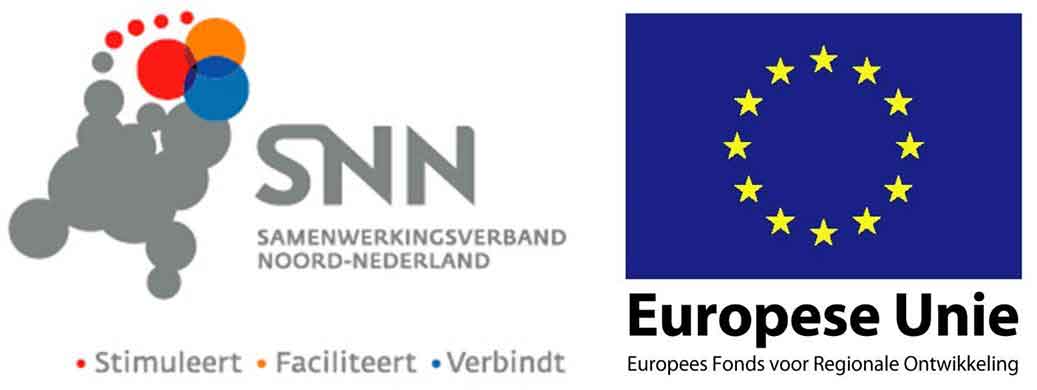The BERNN project follows the concept of the New Plastics Economy. According to this thinking, plastic need never be waste: it always returns to the plastic cycle to produce products and chemicals. In this way, plastics retain their value, or (in the case of upcycling) are even upgraded.
Circular Biopolymers Value Chains
In the project Circular Biopolymers Value Chains, research is done on biopolymers and in this specific case on polyhydroxyalkanoate (PHA). PHA has the potential to become the most sustainable bioplastic. It is a biopolymer that occurs naturally in the cells of bacteria, and can be made from natural residual streams (such as fruit and vegetable residues and waste water). In addition, PHA is fully biodegradable; it is broken down by micro-organisms into CO2 and water.
Bacteria make these PHAs for energy storage. When a food source (consisting of biodegradable compounds such as sugars and fats) is available in abundance, the bacteria produce PHAs and store them in their cells. At times of food shortage, they still have a carbon and energy source to survive and grow with.
But what does this mean for pharmaceutical applications? What do bioplastics have to do with health? To explain this, some background information about our brain is needed:
Our body and keto bodies
Normally, our bodies and brains get energy from food. Our food is converted into glucose, which in turn is converted into ATP (energy), CO2 and water in the mitochondria of our cells. When there is no food source present (for example when we are fasting or exercising) the brain has to use alternative methods. Ketone bodies (KB) or ketone bodies serve as the brain’s main alternative fuel when glucose is not available. When glucose levels are too low, cells convert fats in the body (through a process called ketogenesis) to ketone bodies such as d-β-hydroxybutyrate (d-3HB) and acetoacetate. These can cross the blood-brain barrier and provide important energy for the brain. The body is in a state of ketosis during this process. One speaks of ketosis when the concentration of ketones in the blood is higher than 0.5 mmol/l.
Health benefits and treatment of diseases
These terms will be familiar to some. There is a lot of hype around the concept of ketosis in health and fitness circles. For example, extremely low-carb diets are seen as the ultimate diet for a fit and trained body. Although opinions on the ketogenic diet as a lifestyle are divided, there is much evidence of the positive effects of ketosis for people with metabolic diseases. For example, a ketogenic diet (such as the Modified Atkins Diet) is used for patients with epilepsy to reduce the frequency of epileptic seizures.
There are also potential benefits for diseases such as Alzheimer’s, heart disease, Parkinsons, Huntingtons and MADD, a metabolic disease in which the mitochondria cannot convert fats and proteins into energy. This disease is extremely dangerous, especially in young children, and can cause problems in the brain, liver and kidneys. It is suggested that the metabolic processes of ketosis may help to treat this disease. However, fasting or an extreme diet is not always an option; for example, people with MADD must eat every 2-3 hours to avoid low blood sugar, take in fluids high in glucose, and sometimes receive carbohydrates through a tube.
The alternative is to activate the ketosis state artificially, for example with supplements. An example of such a supplement is MCT (Medium Chain Triglycerides). This is often sold as an oil, and is also used in supplements such as Axona (for Alzheimer’s patients). MCTs are not ketone bodies, but are converted to them in the body. This increases ketone levels without the need for carbohydrate restriction, as these fats are quickly used for energy.
In addition, there are supplements with exogenous ketones:
- Ketone salts: Here the ketones such as d-3HB are bound to a salt such as sodium, potassium, magnesium or calcium. Products with ketone salts are sold in powder form as a dietary supplement, and are promoted for weight loss and fitness purposes. These supplements have a high sodium content and are not healthy in the long run.
- Ketone esters: these are ketones bound to an alcohol such as butanediol or glycerol. Products with ketone esters are already available in liquid form. (For example, research has been done into the benefits in relation to recovery and sports performance).
An example of a ketone ester supplement is DeltaG, which is converted by the body in the small intestine to d-3HB and (R)-1,3-butanediol.
d-3HB in residual streams
But what does this have to do with bioplastics? PHA bioplastics can serve as a raw material for the production of exogenous ketones that could be used to treat diseases or improve sports performance. The disadvantage of the currently available ketone esters is the relatively short time that an increased concentration of 3HB will be present in the blood. The research envisaged here focuses on the development of alternative ketone esters with the aim of a longer, slow-release release of 3HB.
This is a perfect example of upcycling: a waste stream is converted into high-quality products. This again fits perfectly in the picture of the New Plastics Economy. A step further is the production of these ketone esters from these bioplastics, which even have the potential to contribute to alleviating the effects of numerous diseases. Win-win, in other words.
This application is further investigated in the Research Centre Biobased Economy as a side track of the Circular Biopolymers Value Chains project of BERNN. Students of the Circular Chemistry Minor are supporting this research.
This article was produced in cooperation with Hanze University of Applied Sciences Groningen.
Image above: dotshock/Shutterstock
The BERNN research project is made possible by:



